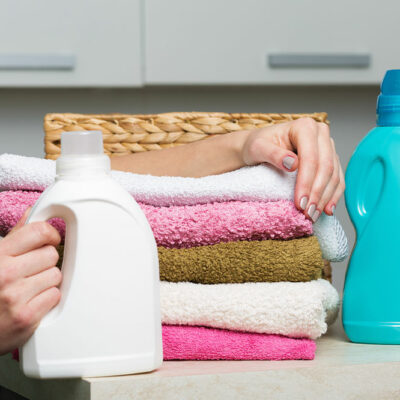
11 common dishwasher mistakes to avoid
A dishwasher has made it possible to streamline the daily chore of washing utensils. This efficient appliance helps save money and conserves more water compared to washing plates by hand. Despite its widespread use, some people unknowingly make common mistakes that reduce the effectiveness of their dishwashers and even cause them to wear out over time. Here are ten such dishwasher mistakes to avoid and ways to rectify them for optimal performance of the appliance.
Rinsing the dirty dishes well before loading
While it might seem fruitful to rinse the dishes before loading them in the dishwasher, experts say that this practice might actually be counterproductive. Dishwashers are equipped with a turbidity sensor, designed to measure the level of soil during the initial rinse cycle. With pre-rinsing, the dishwasher may sense that the dishes are already clean and use less power, resulting in dirtier utensils. To avoid this, one can simply scrape or throw solid chunks of food in the bin and let the dishwasher do the cleaning bit.
Overfilling or overstacking
When overfilled, the dishwasher does not adequately clean all the dishes, needing additional wash cycles. This, in turn, consumes more time and energy and results in an unnecessary waste of detergent. Overstacking can also hinder water drainage and proper water circulation, and prevent the dishwasher from reaching all items in the load. To avoid these issues, keep some wiggle room for the load. It’s best if each silverware item has its own set of tines and are not pressed tightly together.
Improper loading
Apart from overstacking, it is also important to load the dishwasher properly to avoid built up, uneven cleaning, or the need for additional wash cycles. Experts recommend loading the dishwasher from back to front for a more organized cleaning. One should not place bowls, mugs, or cups facing upward since that can cause water accumulation and unpleasant odors. It’s best to position concave-shaped silverware facing down or towards the center, with glassware on the top rack to avoid damage. Additionally, tilting dishes slightly can also lead to better drainage.
Leaving dishes in the dishwasher overnight
Leaving clean dishes in the dishwasher overnight often traps moisture and leads to foul odors and mold development in the dishwasher’s inner rubber seals. If one is too tired to unload the dishwasher at night, one can leave the dishwasher door open to let the interior dry out overnight.
Not putting pods in the dispenser area
Dispenser cup ensures that the detergent is evenly distributed throughout the dishwasher and released only during the main wash cycle. Placing it in the cutlery basket or at the bottom can drain the majority of the detergent during the prewash cycle itself. This often results in suboptimal cleaning performance and potential residue on the dishes.
Not cleaning the dishwasher
Not cleaning the dishwasher periodically can compromise its performance. Over time, it may accumulate food debris, clog the drain, and hinder water flow during the wash cycles. To avoid this, remove the drain and clean it thoroughly. One can use vinegar or baking soda for cleaning the appliance. However, ensure that the vinegar is diluted and poured onto the top rack of the dishwasher and avoid using both these ingredients together. Following this, run a hot water cycle and let the appliance air dry to eliminate residue. Having said that, it’s best to go through the manufacturer’s guidelines to ensure one uses cleaning products that are compatible with one’s appliance to avoid any damage.
Using incompatible detergent
Choosing the wrong detergent or soap, or using an inappropriate amount is a common dishwasher mistake that can cause excessive suds and affect the cleaning performance. Dishwasher detergent comes in different types, like powder, liquid, pod, or tablet. For optimal appliance performance and durability, one is advised to follow the manufacturer’s recommendations regarding detergent type and quantity.
Blocking the water outlet
Obstructing the spray arms by stuffing some last-minute dishes or small silverware items into the dishwasher can affect the cleaning efficiency. The water jets help break down grease and clean dishes effectively. Blocking this outlet can lead to poor drainage during wash cycles, water pooling, unpleasant odors, or even leakage or damage. To prevent this, one should ensure the water outlet is not obstructed by any item.
Forgetting to clean the filter
This is one of the most common dishwasher mistakes to avoid. Dishwasher filters accumulate grime, grease, and food particles over time, and if left unclean, it can give out an unpleasant odor. To remedy this, one can follow the manufacturer’s guidelines to locate and clean the filter regularly, either weekly or monthly. This routine maintenance helps ensure optimal appliance performance.
Closing the lid immediately after unloading
Closing the dishwasher lid promptly after emptying it can trap moisture, especially in areas with rubber components like door seals, leading to mold development and potential stains. To prevent this, it is advisable to allow soap and water remnants to evaporate and let the dishwasher interior air dry before closing the lid.
Using the wrong settings
Dishwashers typically come equipped with various wash cycles, each designed for specific types of dishes, different loads, and levels of soil. For example, the heavy setting with high temperature is usually for heavily stained pans, pots, and dishes, while the delicate wash setting is ideal for glassware. Using the wrong cycle, such as selecting a light wash for heavily soiled items, can result in ineffective cleaning. So it is important to read the user manual and familiarize oneself with the dishwasher’s cycle options for optimal results.


